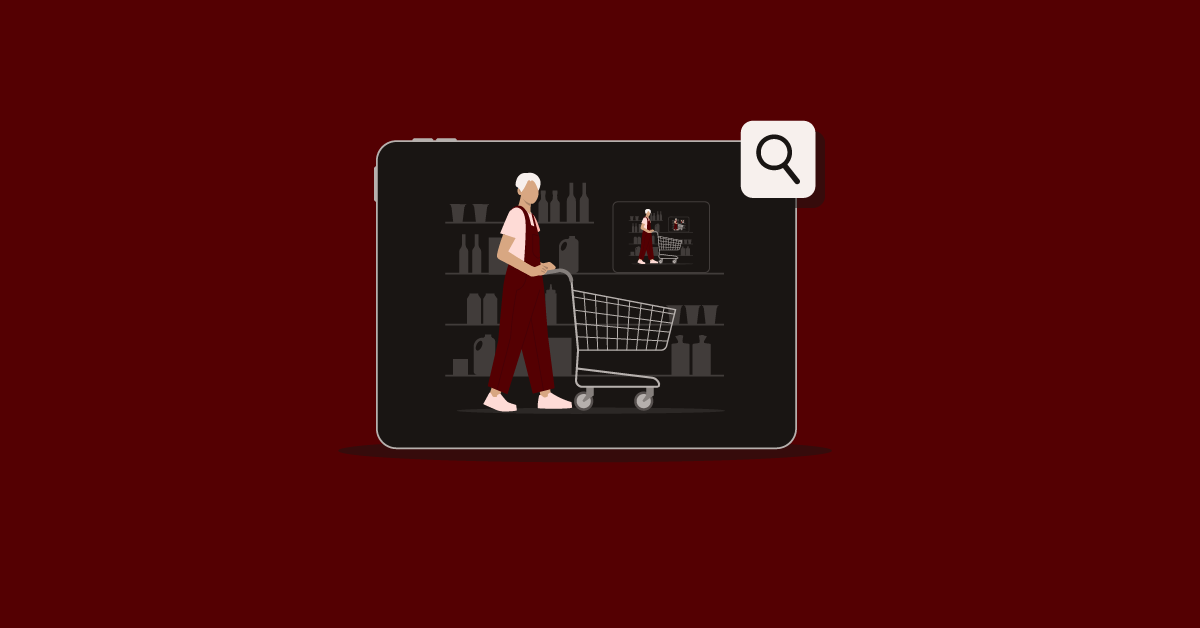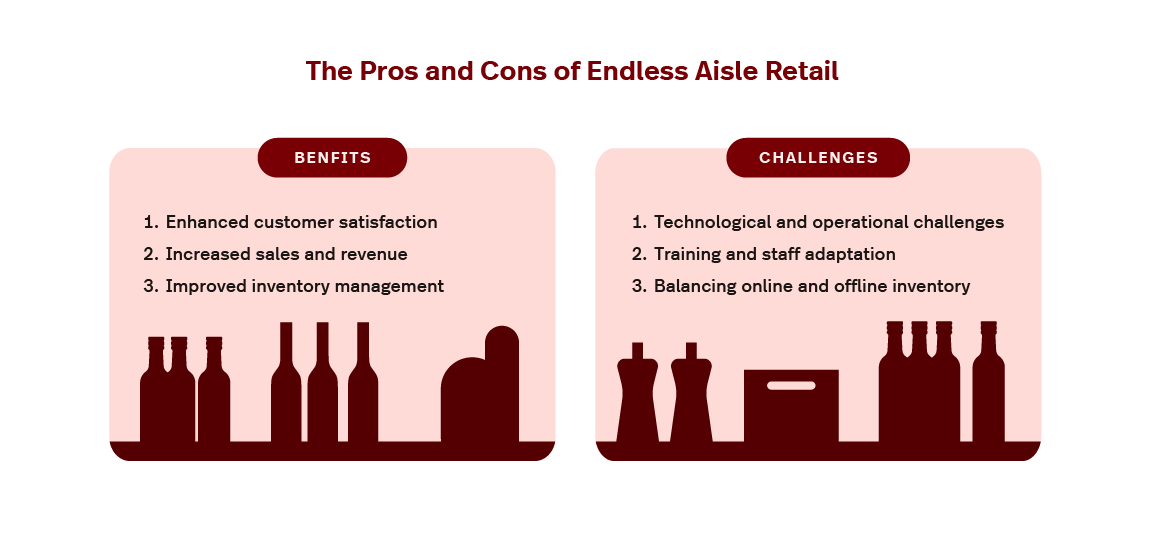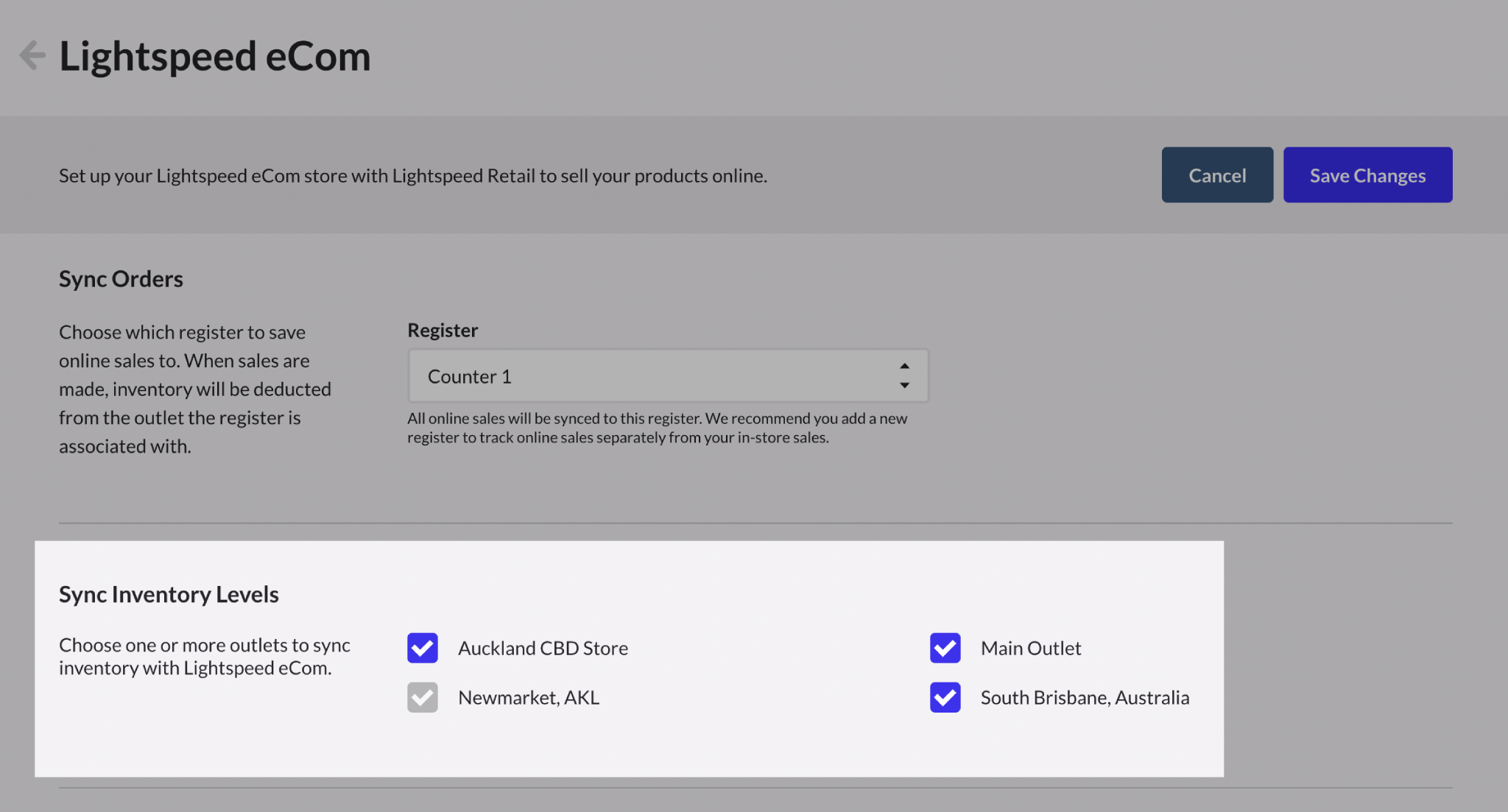
Ever since the first order was placed online, retailers and shoppers both have been chasing the dream—the perfect blend of offline and online retail, with all the conveniences and personalization that could promise. Endless aisles are the closest we’ve come yet.
Endless aisles offer a nuanced approach to meeting customer demands by merging the depth of online inventory with the tangible experience of physical stores. Customers can access a retailer’s full catalog directly from the store, opening them up to your entire inventory—even if a product is out of stock.
In this article, we’ll go through everything you need to know about endless aisles:
- What is an endless aisle?
- How endless aisle works in retail
- Examples of endless aisles
- Benefits of endless aisles
- Challenges and considerations of endless aisles
- Best practices for implementing an endless aisle
10 Ways to Run Your Retail Business Smarter in 2024
Find out how to help your business thrive in the new era of commerce.

What is an endless aisle?
An endless aisle is a digital portal, be it through tablets, kiosks or otherwise, into a retailer’s entire inventory, accessible from their physical locations.
Endless aisles can also supercharge showrooming, where retailers have a sample product on the floor but customers finalize their purchase through kiosks or mobile devices to be delivered to their homes.
As online shopping began to offer an almost limitless selection, physical stores recognized the need to expand their own offerings to meet this new standard of convenience and choice. Once just a theoretical application of ecommerce tools in retail, the endless aisle saw a breakthrough in the mid-2010s, like when Walmart started experimenting with the concept in 2017. Eventually, endless aisles caught on with more and more retailers.
Endless aisle retail helps brick-and-mortar retailers compete with online platforms by offering a wider range of products without the constraints of physical space. They extend a store’s product offering beyond what is physically available on the shelves, and combine the convenience of online shopping with the in-person service of traditional retail. They address customer opposition to stockouts—10% of sales are lost due to products being out of stock—by offering an alternative that doesn’t require going to a competitor.
How endless aisle works in retail
Endless aisles aim to provide seamless access to a retailer’s full inventory. For example, when customers encounter out-of-stock items or want products not sold in store, the endless aisle offers a digital portal to order these items directly from the retail floor.
For a customer, here’s how an endless aisle works:
- A shopper wants a product, and visits a store to buy it
- They find their desired product is out of stock—potentially because of empty shelves, or because they want a different color than is stocked in store
- Instead of leaving the store to try somewhere else, the shopper looks at in-store kiosks or mobile devices to find the desired product
- They make the order
- The order is shipped to their address or to the store for in-store pickup
Retailer’s back-end process
Orders placed via the endless aisle are processed through the same fulfillment and logistics channels as online purchases, ensuring that customers receive their items directly, regardless of whether the product is stocked in-store or at a warehouse.
Implementing an endless aisle is a process of integrating ecommerce tools with your inventory management system to create a unified shopping platform.
You need:
- An ecommerce platform to enable an endless aisle: as endless aisle orders are functionally online orders, you need a way for those online orders to be processed.
- Kiosks or tablets: these are how customers will browse your endless aisle in-store. They should be secure from theft, but easily accessible without having to talk to a sales associate for permission.
- Alternatively, you can use QR codes customers can scan to be taken to your website.
- An inventory database (your POS system) integrated with your ecommerce platform: you don’t want to be managing two separate systems and two separate inventories.
Examples of endless aisles in retail
Endless aisle shopping is relatively new, and retailers are still feeling out how shoppers want to use it.
Here are two examples of retailers putting endless aisle retail into practice.
Walmart
In a 2017 test of the endless aisle concept, Walmart implemented touchscreen kiosks customers could use to shop while in stores. These kiosks didn’t just link customers to Walmart’s website, though. In the toy aisle, the kiosks prompted shoppers with questions, giving them recommended results based on their answers. In this way, the endless aisle sought to bring both convenience and product knowledge to shoppers.
Staples
Staples started experimenting with endless aisle kiosks all the way back in 2013, letting customers order out of stock products for next day delivery. A number of American Staples stores currently have endless aisle kiosks in their stores, which means customers have access to over 100,000 products—far more than can fit on the shelves.
Benefits of endless aisle in retail
Endless aisles are poised to be the next big thing in retail. Here’s why.
Enhanced customer satisfaction
With endless aisles, customers enjoy access to a wider range of products than what is available on the shop floor, ensuring they can find exactly what they’re looking for without the limitation of store inventory.
The endless aisle offers detailed product information and comparisons at the touch of a button, empowering customers to make informed decisions even if they can’t—or don’t want to—talk to a sales associate.
This ability to fulfill specific needs and preferences on the spot reduces the likelihood of customers leaving empty-handed.
Increased sales and revenue
Endless aisles allow customers to access and purchase from the retailer’s full inventory, including items not physically present in-store. This means more potential sales, and more sales mean more revenue.
Why? Because customers don’t need to go somewhere else to get everything they need. The convenience of finding everything in one place encourages larger basket sizes and reduces the likelihood of sales lost to competitors or due to stock limitations.
As a bonus, an endless aisle can introduce customers to products they were previously unaware of, boosting impulse buys and cross-selling opportunities.
Improved inventory management
Endless aisles enhance inventory management by allowing retailers to offer a wider range of products without the need for physical stock to be present in every store. This approach reduces the risk of overstocking and understocking, as products can be sourced directly from warehouses or suppliers based on customer orders.
But it’s not just about keeping the backroom clean and shelves optimally stocked. Inventory data tracking enabled by endless aisles provides valuable insights into consumer preferences, helping retailers adjust their stock levels dynamically to match demand and catch trends on the upswing.
For example, if a particular product is doing well in endless aisle orders—or if a particular product rarely sells, but does correspond to larger baskets when it does—it’s probably time to stock that product in store.
Challenges and considerations
As exciting as they are, endless aisles have their own challenges, too. Here’s what you need to keep in mind.

Technological and operational challenges
Connections between in-store digital interfaces and the retailer’s inventory system require a fully integrated system managing both in-store sales and ecommerce orders. This includes ensuring real-time synchronization of stock levels and transactions across different sales channels to avoid discrepancies.
On the operational side, training staff to efficiently use the system and provide the necessary support to customers is critical. Retailers must also manage logistics effectively to fulfill orders from various sources, ensuring timely delivery to maintain customer satisfaction.
To get this all done, you need a flexible foundational POS system.
“Lightspeed is an investment in helping us build a foundational technology piece that’s helping us grow and generate more revenues.”
Wilfredo Rodriguez, CFO, Sunmed, Your CBD Store
Training and staff adaptation
Training can be hard. Introducing endless aisle technology means employees need to be proficient with new tools and processes to assist customers effectively, navigating between physical and digital inventories seamlessly.
This requires comprehensive training programs that not only cover the operational aspects of the technology, but also emphasize enhancing the customer experience, for everyone on the team.
Ensuring all team members are comfortable and skilled in these new responsibilities takes time and resources. It may be best to hold a training day where everyone in a store is introduced to the endless aisle process at once, but that requires shutting a store down for part of a workday or keeping employees after hours (and the extra pay that involves).
Balancing online and offline inventory
To run an endless aisle without doubling work behind the scenes, you need real-time inventory data across both digital and physical platforms. This synchronization ensures that products available for purchase online are accurately reflected in-store and vice versa, preventing customer disappointment due to stock discrepancies.
Achieving this balance requires a sophisticated inventory management system capable of updating in real-time and capable of handling the dynamics of online orders, in-store sales and returns.
Another consideration: you might not want all of your stores to be available for endless aisle shopping. With Lightspeed Retail and eCom, you can select which locations sync their inventory to your ecommerce site, isolating select stores from endless aisles as needed.

Best practices for implementing endless aisle
Clearly, success with an endless aisle is about more than setting up a mobile browser open to your website and leaving it at the front counter.
Be aware of these best practices when implementing an endless aisle.
Seamless integration with existing systems
Seamless integration with existing systems, like your POS system, is crucial for the successful implementation of an endless aisle. Transactions made through the endless aisle need to be processed with the same efficiency and security as in-store purchases, so they should run through the same payment processor as well.
Linking the endless aisle directly to your POS system means inventory updates and financial transactions are automatically synchronized, providing real-time visibility of stock levels and sales data. This minimizes discrepancies between online and in-store inventory, enabling accurate order fulfillment and efficient management of customer orders.
User-friendly interface for customers
Your endless aisle can be as efficient as humanly possible on the backend, but if it’s hard to use, customers won’t interact with it. A clean, simple interface ensures customers can easily navigate through your extended inventory without feeling overwhelmed.
The design should be intuitive, allowing customers to search for products, read descriptions and make purchases with minimal assistance.
Must haves include:
- Clear categorization: you need consistent top-level categories and no more than ten sub-categories per top-level category. For example, instead of “womens tops > wool, polyester” and “men’s clothing > tops, pants”, sort by gender (or style), then a consistent sub-category system—or by clothing article type, then style. This is particularly important if you have third-party vendors in your endless aisle.
- High-quality images: since an endless aisle connects customers to products they might not be seeing in store, you need multiple high-quality images that help them get the full picture of what they’re looking at.
- Detailed product information: an endless aisle shopper should walk away from the kiosk as informed as if they had a conversation with your best-trained sales associate.
Including product comparisons and reviews can further assist in the decision-making process.
Don’t forget about the in-store employee knowledge and training
Employees should be knowledgeable about navigating the system, and able to assist customers with queries and process orders through the endless aisle platform. This ensures that the customer experience is smooth and efficient, with employees ready to offer support and enhance the shopping journey.
Training should cover:
- The technical aspects of the system: if a customer has a question about the endless aisle kiosks (or tablets or QR codes), every customer-facing employee should be able to troubleshoot it. Otherwise, sales associates look uninformed and your endless aisle appears more complicated than it likely is.
- Inventory knowledge: since your endless aisle is loaded up with product descriptions, it looks unprofessional if your sales associates know less–or different–information. Plus, as the sheer breadth of choice an endless aisle offers can lead to choice paralysis, well-informed sales associates can make more effective product suggestions and guide shoppers through your inventory.
Use data to inform your endless aisle content
Like with any new process you add to your store, perfecting the endless aisle is an interactive process. That’s why you need to gather data to tailor your endless aisle’s product offerings to meet current demand and predict future trends, as well as to adjust where you offer it, through what process and with what options.
For example, if data shows a high demand for certain products, you can prioritize them in the endless aisle interface, ensuring they are easily accessible.
Similarly, data on less popular items can guide decisions to offer special promotions or discounts, stimulating interest and sales.
Look at data about:
- Customer behavior: how many customers interact with the endless aisle kiosk? For how long? Do endless aisle shoppers spend more or less? Are they selecting delivery or in-store pickup more often?
- Purchase history: what do endless aisle customers buy? Is it different than in-store or online shoppers?
- Search trends: are endless aisle shoppers regularly looking for specific products? Or product variants? How often do new search trends pop up?
Expand your store with an endless aisle
Endless aisles open in-store shoppers up to online convenience, representing the best of both worlds—a chance to interact with retailers and sales associates in person without sacrificing the selection ecommerce can offer.
Implementing endless aisle retail may seem complicated, but if you’ve got a fully integrated POS and ecommerce platform, you’re already most of the way there. Lightspeed can help you build the foundation for an endless aisle in your stores—get in touch with us to talk it through.
Endless aisle FAQs
What is the meaning of endless aisle?
The endless aisle extends the range of products available to customers beyond what is physically present in a store.
Through technology like in-store kiosks or tablets and online platforms, retailers can offer their entire inventory for customers to browse and purchase, regardless of whether the items are stocked on the physical shelves.
This approach effectively merges online and offline shopping experiences, allowing customers to order products on demand if they are not available in the store, thereby enhancing customer satisfaction by providing more choices and reducing missed sales opportunities for the retailer.
What is an endless aisle kiosk?
An endless aisle kiosk is a digital interface, like a tablet, located within a physical retail environment, designed to enable customers to browse and order products that are not available on the shop floor. These kiosks connect directly to the retailer’s online inventory, allowing customers to access the entire product catalog, including items that are out of stock, available in different sizes or colors or otherwise not displayed in the store.
Customers can use these kiosks to make purchases on the spot, with the option for in-store pickup or direct shipping to their home.
What is an example of an endless aisle?
The business supply retailer Staples has implemented endless aisle kiosks that connect shoppers to 100,000 products, a wider range than can be found in stores. Customers can pay at the kiosks for next-day delivery to their homes.

News you care about. Tips you can use.
Everything your business needs to grow, delivered straight to your inbox.


![11 Tips To Make Your Pop-Up Shop a Roaring Success [For Retail Store Beginners and Pros Alike]](https://blog-assets.lightspeedhq.com/img/2021/06/2da3ae10-blog-hero_pop-up-shop.jpg)